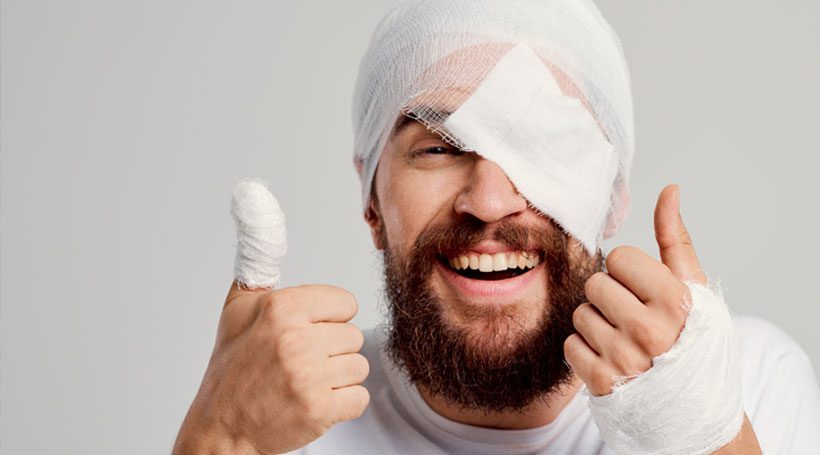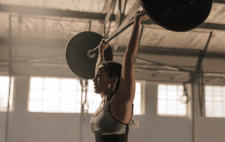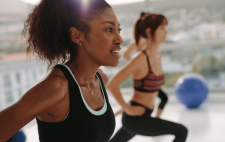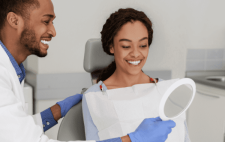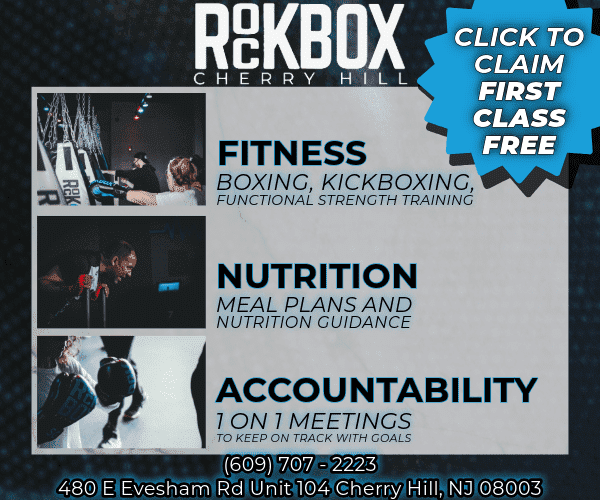
Katie Schultes, MD
Emergency room doctors may look like your neighbors – because they are – but their work gives them a front-row seat to accidents most of us never see coming. And for many, what they’ve seen on the job shapes their everyday choices.
“I have three sons and a husband. We’re very active, and I’ve definitely changed the way we do things based on what I see in the ER,” says Katie Schultes, MD, Assistant Chair of Emergency Medicine at Inspira Medical Center Mullica Hill. “There’s just stuff I’d never let my kids – or myself – do, because I know exactly how it can end.”
Here are the things ER doctors say you should avoid – because they’ve seen what can go wrong.

Don’t blend into the water
What you wear to the pool or beach might seem like a style choice, but when drownings happen quietly and without warning, visibility can be a lifesaver.

Alan Lucerna, DO
“Unlike what you see on TV, people aren’t screaming when they go down. It’s usually a quiet moment, with just the displaying of hands,” says Alan Lucerna, DO, Medical Director of Emergency Medicine at Jefferson Stratford Hospital. It’s best to avoid dark colors and “dress to be seen and stay alive,” he says.
“The most important thing is the choice of color: neon orange or pink,” he says. “Stay away from black or blue. In the ocean, black can look like trash or a log from a distance. And in a swimming pool, the background is usually blue too, so someone in a blue swimsuit just doesn’t show up.”
Lucerna also urges parents to assign someone to watch children in the water actively. “People think everyone’s watching the kids, but no one really is,” he says. “They’re on their phones, drinking, chatting. And it takes just minutes.”
He also advises CPR training. It’s a quick class that could make a life-or-death difference before help arrives.

Don’t trade “likes” for a hospital visit
The internet loves a viral challenge. ER doctors? Not so much.
“We’ve seen a bunch of them,” says Schultes. “The milk crate challenge was one of the big ones. People stacked the crates and tried to climb up and down – and we saw some pretty severe straddle injuries from falls. One person actually fractured their pelvis.”
Other challenges have been less visible but no less dangerous. “There was the cinnamon challenge,” she says. “Kids were trying to swallow spoonfuls of cinnamon, which caused inhalational injuries.”
One that really raised red flags was the Benadryl challenge.
“Kids were taking very dangerous amounts of Benadryl to get some kind of high,” says Schultes. “It’s seen as safe because it’s over the counter, but in high doses, it’s very serious. It can become toxic very quickly. We saw kids with high heart rates, confusion.”
Contrary to what TV might suggest, stomach pumping isn’t the standard ER response. “Sometimes we’ll give charcoal to absorb the drug if they come in quickly enough,” she explains. “We mix it with water, and they drink it. If they’re unconscious, we’ll put in a tube and give it that way.”
The advice she gives friends is to pay attention to their kids’ social media behavior. “It’s important to encourage them not to engage in these risky behaviors.”

Don’t DIY your way to the ER
Warm weather sends many into weekend-warrior mode – but sometimes those yard projects end with a neck brace, not a sense of accomplishment.
“On the first nice days of the seasons, we’re seeing people busting out chainsaws without eye protection or gloves, and wood chips are flying,” says Schultes.
The results? Chainsaw lacerations and foreign bodies in the eye.
Ladder injuries are also high on the offender list. “The worst thing I’ve seen was somebody put a ladder on top of a car to get something off the roof,” Schultes recalls. “He broke his neck.”
While that case was extreme, ladder incidents are common enough to make them a consistent hazard. “Using one safely is key,” she says. “Place the ladder on a flat area. Have someone else hold it to prevent injury or a fall.”
When in doubt? Consider outsourcing the gutter work or tree cutting, she says.
Schultes also urges caution with seemingly low-risk tasks like mowing the lawn or power washing. “You need to be really conscious of everyone in your yard when mowing,” she says. “We’ve seen some pretty sad things with children and pets.”
And power washing may seem safe, but think again. “Those injuries can be more severe than you think,” Schultes says. “It’s high-velocity water mixed with dirt. It causes penetrating injuries that can lead to deep infections.”

Don’t let bacteria crash your BBQ
At a backyard cookout or grabbing a fistful of Johnson’s popcorn on the boardwalk, it’s easy to forget about hand hygiene and food safety.
“A lot of people go to a barbecue and come back with diarrheal illness,” says Lucerna. The usual suspects? Dirty hands, uncovered dishes and perishable foods left out too long.
“Sometimes it’s not easy to bring soap and water to a picnic,” Lucerna says. “But hand sanitizer can help. And just be conscious that food safety is affected by temperature. Things like mayonnaise shouldn’t be sitting out for a very long time.”
And then there are the tiny disease-carriers with indiscriminate tastes known as flies. “They land everywhere, maybe on something rotten, and then they land on your exposed food,” he says.
Cross-contamination from raw meat is another routine issue. “People handle raw food, put it on the grill, and don’t realize they need to wash their hands before touching other things,” he explains. “Especially with chicken. You can end up spreading salmonella without knowing it.”
Treatment is usually fluids and something to ease the nausea. But the smarter move? Wash your hands. Cover your food. And if the pasta salad’s been baking in the sun, don’t risk it, he says.

Don’t pack light on your meds
Vacations are supposed to be relaxing. But ER doctors often see the darker side – when travelers forget to pack enough of their medications, run out mid-trip and wind up in the ER instead of by the pool.
“People get excited to travel but don’t pack enough medications,” says Lucerna. “They eat more salt, their blood pressure spikes and now instead of enjoying themselves, they’re in the ER.”
Even a minor delay – a canceled flight or extended stay – can throw off medicine counts. “One vacationer didn’t pack enough blood pressure meds and ended up waiting in the ER for an hour because their pressure went very high,” Lucerna says.
His advice: Visit your doctor beforehand, ask for a refill, and bring more than you expect to use. Also, take photos of your prescription bottles.
“Sometimes they just bring a white pill and say, ‘It’s for blood pressure,’” he says. “Or they bring a pillbox, and we don’t know what’s in it. People try to describe it, and it may not be the right medication.”


